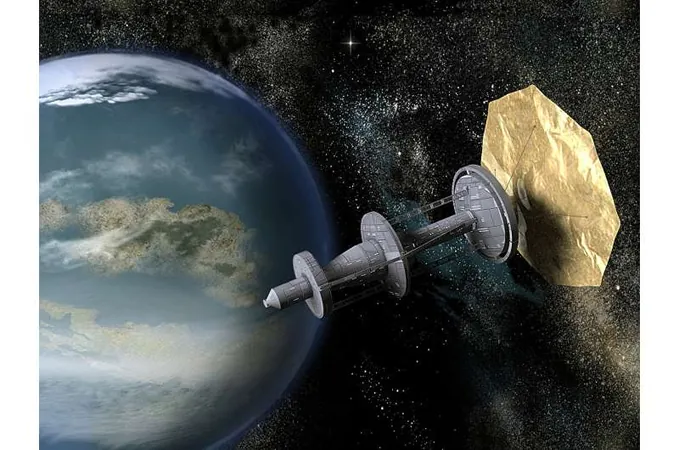
Revolutionizing Space Travel: Video Game Techniques Forge New Solar Sail Designs
2025-08-20
Author: Mei
From Gaming to Space Innovation: A Surprising Inspiration
Innovation can often spring from the most unlikely sources. Researchers at the University of Nottingham have taken an unexpected leap, applying video game techniques to revolutionize lightsail design. This innovative approach promises to enhance the efficiency of solar sails used in space travel.
What Are Transmissive Solar Sails?
At the heart of the research is a focus on transmissive solar sails—structures that refract light instead of simply reflecting it. While traditional sails harness light to push themselves forward, transmissive sails generate thrust parallel to their surface, making them ideal for applications like orbital station-keeping. This capability means they can even elevate their orbit without needing to constantly adjust their position.
Harnessing Gaming Techniques for Space Design
To model how light interacts with these sails, Samuel Thompson, a recent PhD graduate, employed ray tracing—a technique commonly used in modern 3D video games. This method simulates individual rays of light and their interactions. However, to maintain efficiency, Dr. Thompson carefully filtered out weaker rays that could overwhelm the simulation.
Trials of the Algorithms: Achievements and Challenges
Once the simulation was operational, Thompson integrated reinforcement learning, another video game staple. This machine learning strategy allows algorithms to evolve through trial and error, optimizing the sail's structure over time. The team tested the algorithms on two solar sail designs: a prism and a 'lightfoil.'
Breaking Limitations: Enhancing Prism Power
Prisms proved highly efficient on their own, but issues arose when combined, leading to a phenomenon called 'pattern propagation,' which slashed their thrust. To counter this, the algorithm introduced 'pattern skimming,' angling the prisms such that refracted light bypassed adjacent ones. This resulted in a remarkable 58% increase in tangential pressure, significantly outpacing previous designs.
Boosting Stability with Innovative Shapes
Meanwhile, lightfoils, focused on maintaining stability through 'corrective torque,' underwent redesign as well. The optimization algorithm generated a rounded pentagonal prism shape that enhanced self-correcting capabilities by an astonishing 74%. This stability is crucial for preventing catastrophic spins in spacecraft.
Navigating New Challenges
Despite these breakthroughs, the new lightfoil shape experienced a 22% reduction in the angles at which stability is maintained—a potential setback for real-world applications. However, the adaptability of the algorithm shone through when tasked with optimizing configurations for a CubeSat, resulting in a unique triangle-like prism that boosted torque by an incredible 147%.
Looking Ahead: The Future of Solar Sail Design
While the current algorithm does not factor in critical elements like material selection or deployment weight, its flexibility holds promise for future designs. Optimization algorithms can be adjusted to improve various parameters, making them invaluable as we advance solar sail technology. As research continues, these innovative tools will play a key role in the evolution of fuel-free spacecraft sailing through the cosmos.



 Brasil (PT)
Brasil (PT)
 Canada (EN)
Canada (EN)
 Chile (ES)
Chile (ES)
 Česko (CS)
Česko (CS)
 대한민국 (KO)
대한민국 (KO)
 España (ES)
España (ES)
 France (FR)
France (FR)
 Hong Kong (EN)
Hong Kong (EN)
 Italia (IT)
Italia (IT)
 日本 (JA)
日本 (JA)
 Magyarország (HU)
Magyarország (HU)
 Norge (NO)
Norge (NO)
 Polska (PL)
Polska (PL)
 Schweiz (DE)
Schweiz (DE)
 Singapore (EN)
Singapore (EN)
 Sverige (SV)
Sverige (SV)
 Suomi (FI)
Suomi (FI)
 Türkiye (TR)
Türkiye (TR)
 الإمارات العربية المتحدة (AR)
الإمارات العربية المتحدة (AR)